Five Millimeters of Happiness
Yellow, crisp, tasty, and a hot topic of debate—french fries can be a divisive issue. In Belgium their preparation is a matter of national identity. We went searching for the perfect pommes frites in the Porsche Macan Turbo.
Consumption data
Macan Turbo with Performance Package
Fuel consumption combined: 9.7 - 9.5 l/100 km
CO2 emissions combined: 224 - 219 g/km
Macan Turbo
Fuel consumption combined: 9.2 – 8.9 l/100 km
CO2 emissions combined: 216 – 208 g/km
(as of 2017)
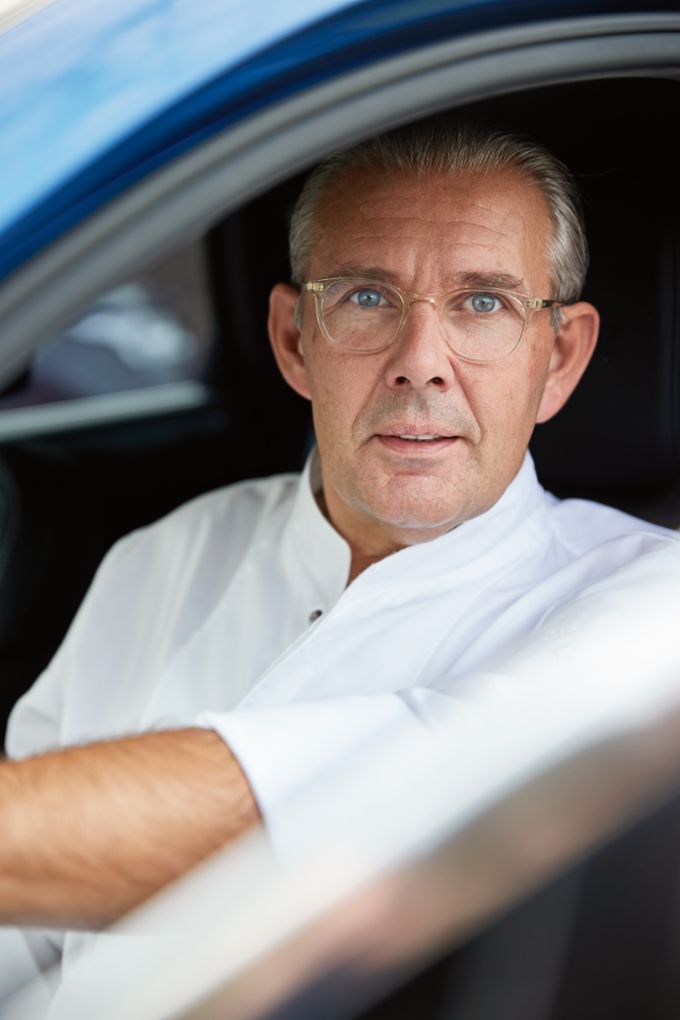
Hof van Cleve
Top chef Peter Goossens serves gourmet fries in his three-star restaurant.Once a week, three-star chef Peter Goossens treats himself to a portion of pommes frites, enjoying them with pickles and a generous helping of mayonnaise. He closes his eyes in rapture just at the thought: the first fries from the hot paper cone they’re served in are still crispy and coarse in texture, while the very last ones tend to melt in the mouth, having soaked up all the tasty condiments added to them. “One does need a little happiness in life,” says the Belgian, whose restaurant, Hof van Cleve—located in Kruishoutem, a few kilometers southwest of Ghent—has been rated one of the twenty best restaurants in the world.
There are many countries that claim to have invented what may be the most popular way to prepare potatoes. The internationally ubiquitous term “french fries” would imply that frites were thought up by the French. This, however, is a claim that the Belgians make for themselves. “Pommes frites are part of our DNA, which is why you’ll only find real fries here in Belgium,” Goossens says with a smile. “The trick is to deep-fry them twice. And yet, as is true for all food, it’s the ingredients that make them taste so good.”

Church, market, french fries:
Frietparadijs in Kruishoutem is something like the social center of this small Flemish town.Goossens always has at least one dish on his menu that he serves with fries—not exactly a conventional accompaniment at a Michelin three-star restaurant. And yet the top chef has elevated the production of the golden-yellow strips of potato to an art form. The potatoes used for it shouldn’t be too fresh, but shouldn’t have been in storage for too long either, because then the starch they contain will turn into sugar, causing brown spots to form when deep-frying. Along with this, the shape and thickness are decisive when it comes to the taste. Goossens always modifies his haute-cuisine fries to suit the respective dish he’s serving: fries served with pheasant are exactly five millimeters thick and eight to nine centimeters long, while the ones that accompany Wagyu beef may be two centimeters thicker. And each one of them, of course, is cut by hand.
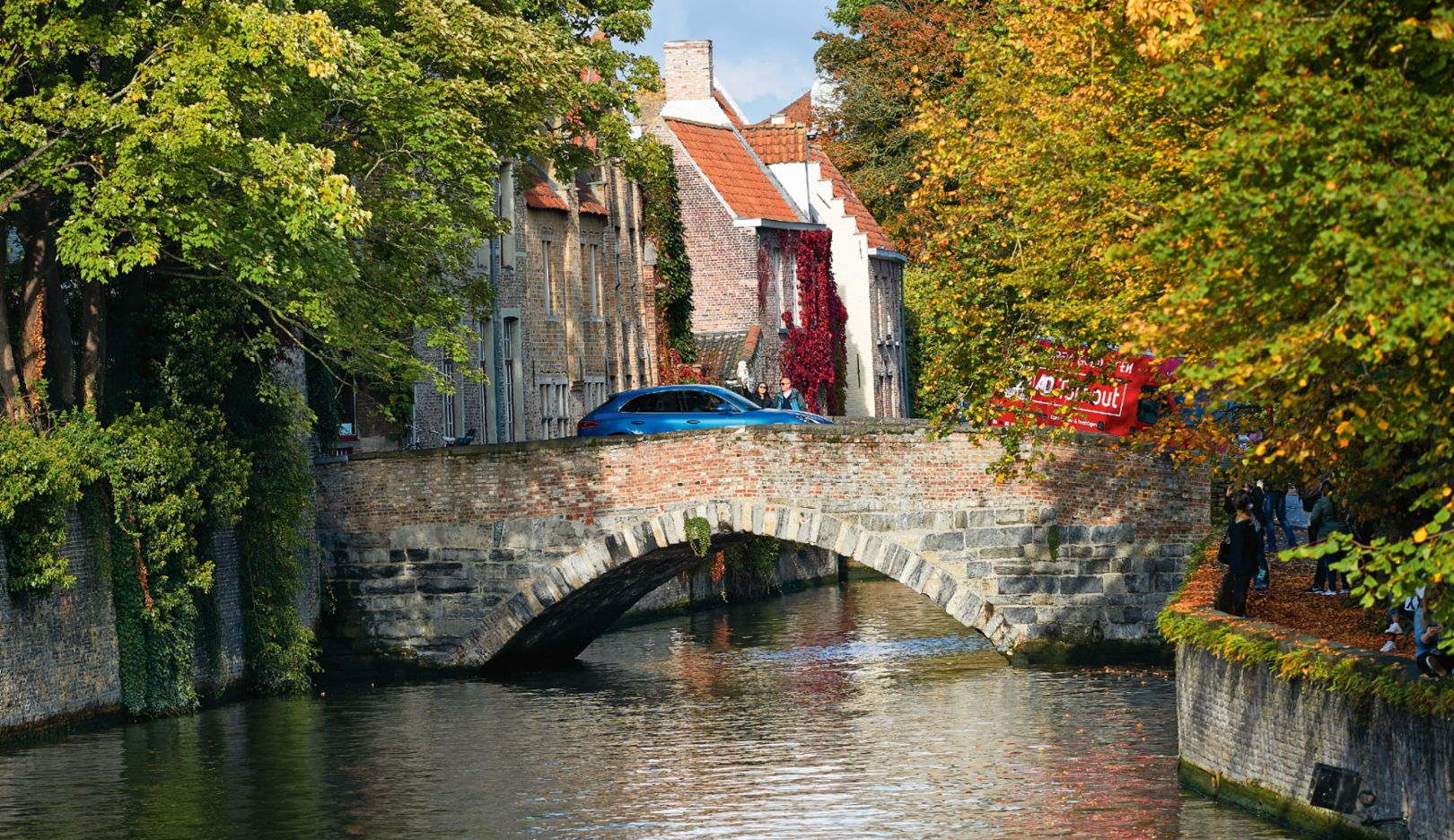
How to make perfect fries isn’t something that you learn at the grandes écoles of haute cuisine in Paris, where Goossens was lucky enough to have trained. He was more or less born with the recipe in his hand. “When I was growing up, my mother did all the cooking, with one exception: my father made the best fries,” as Goossens—taking a break from cooking—explains in the gravel parking lot of his restaurant. All the other vehicles parked next to the Porsche Macan Turbo are luxury and sports cars, much to the delight of this car-crazy chef. Goossens has competed in the Belgian Zoute Grand Prix several times and raced in the Mille Miglia for the first time in 2016. Unfortunately, he doesn’t have time to go for a spin in the Macan, as he laments. His guests are waiting. It’s the signal to return for the next tasting.
French fries aren’t having an easy time, especially when they’re crispy. This is because the European Union doesn’t foresee a future for them. The reason is a carcinogenic substance called acrylamide, which is produced when pan-frying, deep-frying, and roasting ingredients at high temperatures, especially potato- and grain-based products. Belgium sees this as a threat to its culinary tradition. It would be a disgrace should the EU issue a ban, as Belgium’s minister of tourism, Ben Weyts, explains. The twofold deep-frying process is particularly important for a perfect taste: the first round results in fries that are fluffy on the inside, while the second ensures they’re crispy on the outside.
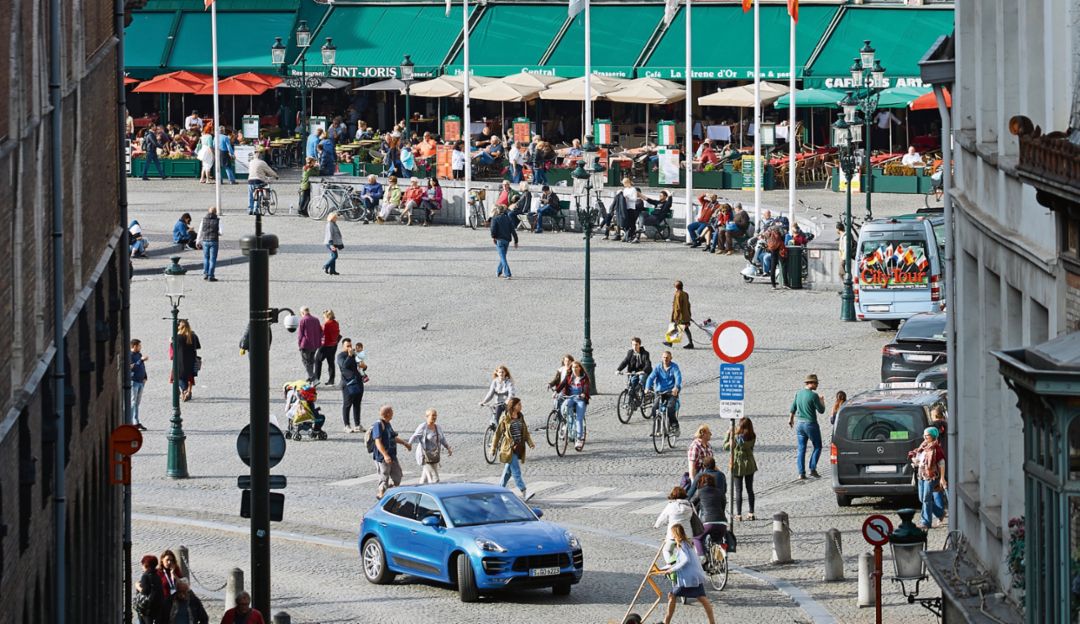
“We make them like our grandmothers did.” Stijn Vlaeminck
Anyone who is seized by a craving for fries when in Belgium will find them on every corner. There are more than five thousand frituren, as these fast-food joints are called in Flanders, dotted across the country, and nowhere is their density greater than on the axis Brussels-Ghent-Bruges. At least according to the Flemish, who maintain a traditional rivalry with the French-speaking Walloons over who reigns supreme in affairs of the french fry. Peter Goossens prefers to buy his weekly ration at Frietparadijs in the nearby town of Kruishoutem. Frietparadijs is located in the town’s market square and has been run for the last four years by Stijn Vlaeminck and Joshua van Loucke, neither of whom had a background in the fries business. “For us, having our very own fry stand has made our childhood dreams come true,” Vlaeminck says. He used to be an accountant. Van Loucke, a trained florist, adds: “We make french fries the way our grandmothers did.” This means that they deep-fry their sticks of potato twice in blanc de bœuf, or pure beef drippings. They serve the fries with stoofvleessaus—a beer sauce that’s actually used for beef stew, a national dish in Flanders. Vlaeminck and Van Loucke have it specially made by a butcher; the recipe is a closely guarded secret that even they have never seen. “But our guests obviously think that our fries are the best ones far and wide.”
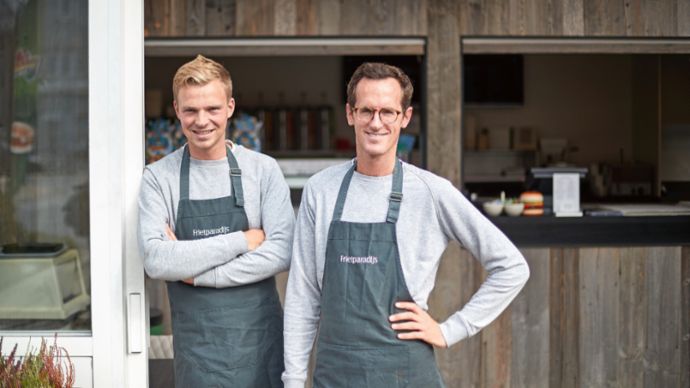
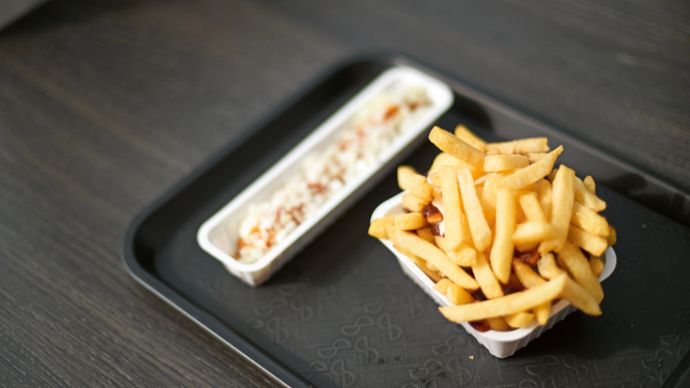
Frietparadijs
A childhood dream came true when young entrepreneurs Stijn Vlaeminck and Joshua van Loucke opened their frituur.
And even though Kruishoutem, with around eight thousand inhabitants, is home to three fry stands alone; they’re “no competition,” Vlaeminck asserts. And where are the best fries served up in nearby Ghent, where the density of frituur shops is even higher? Vlaeminck doesn’t have to think for long. “No question: at De Gouden Saté!”
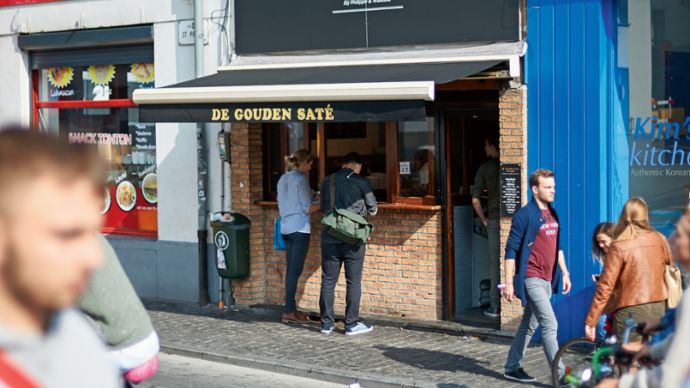
Unassuming yet legendary:
De Gouden Saté is the place to go in Ghent for anyone with a craving for fries.
Rich heritage:
Owner Van Laar is still preparing his predecessor’s bestseller, the Julientje, a combination of fries, beef, meat sauce, and onions that will stick to your ribs.“Night owls love our Julientje.” Mathys van Laar
In Flanders’ second-largest city, which is home to more than thirty thousand students, De Gouden Saté on Overpoortstraat is the main port of call for hungry night owls. This legendary fry stand was opened thirty years ago by a man named Julien. Julien has since died; however, his creation, the “Julientje,” is still the most popular nighttime snack for the residents of Ghent. It’s comprised of a large portion of fries together with stoofvleessaus, mayonnaise, and beef, topped by a generous helping of both crispy-fried and fresh onions. Mathys van Laar, who is tirelessly passing servings of this piping-hot delicacy over the counter, keeps the shop open all night. When the bars and clubs of Ghent close their doors in the early morning, the line of hungry young customers in his shop extends out onto the street. “They love our Julientje, because it’s big, greasy, and tasty,” Van Laar says with a smile, while passing a mountain of fries, almost completely hidden under three different sauces, to a young man.
OK, Ghent—I’m impressed—but didn’t someone say that the fries in Bruges are even better? It’s no surprise that the inhabitants of Ghent insist that their own shops serve the best fries. And yet they’re still prepared to tell you where the best fries can be found in their neighboring city: “At Bosrand!” as both the owner and guests of this establishment exclaim in unison. Before heading to Bruges to try out the fries, however, a visit to the Frietmuseum, the world’s only museum dedicated to french fries, provides enlightenment about their origin. They’re said to have been invented in nineteenth-century Wallonia as a survival strategy: the fishermen on the Meuse River were accustomed to deep-frying their catch. One winter was so harsh that the lack of fish forced them to use potatoes, and voilà—one of the world’s favorite treats was born. “Pommes frites are typical of Belgium, because they’re unassuming and unostentatious,” says the museum’s director, Cédric van Belle, explaining the characteristics that give both the Belgians and their national dish their identity.
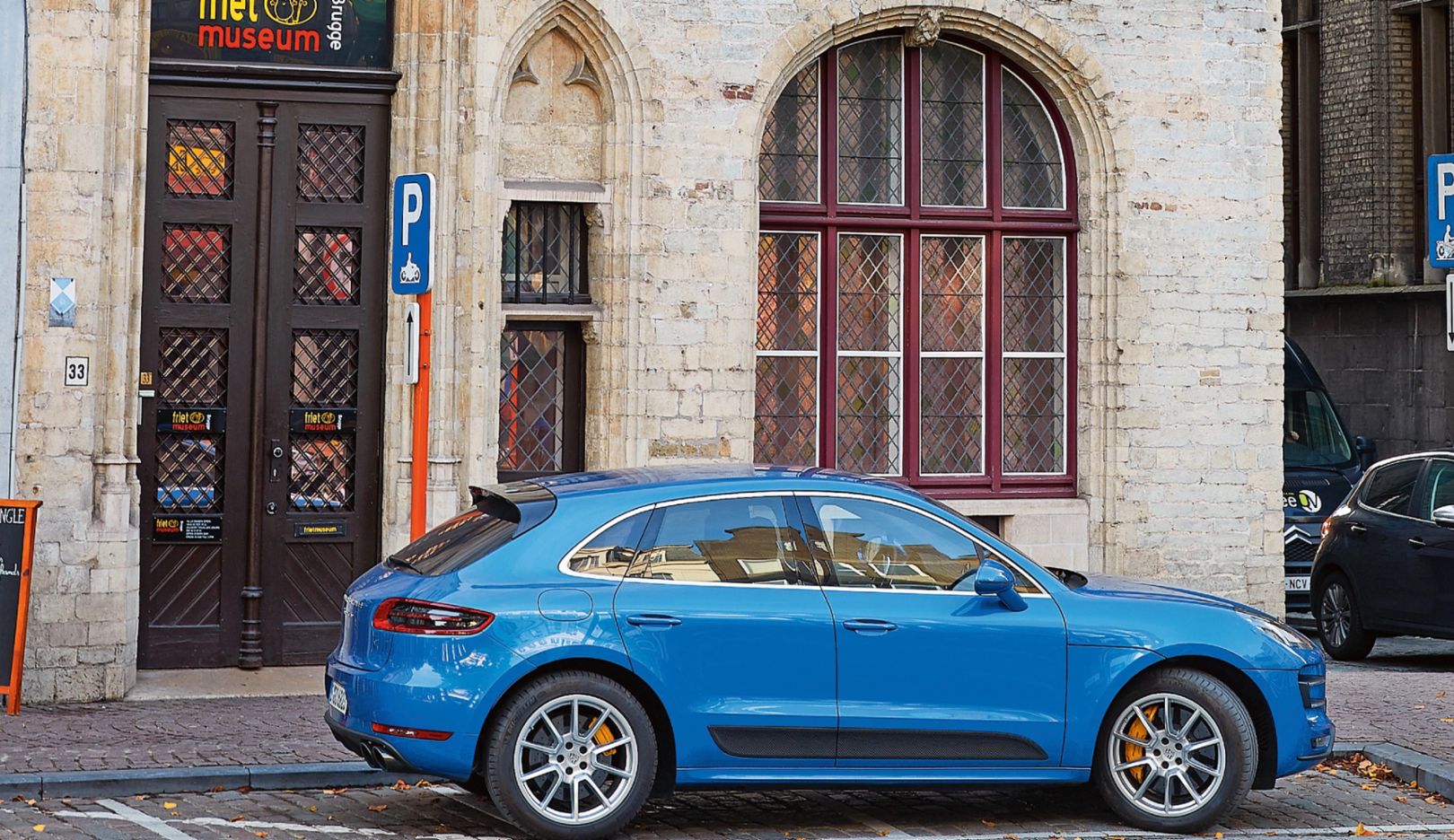
Frietmuseum
The museum in Bruges is the final authority when it comes to pommes frites.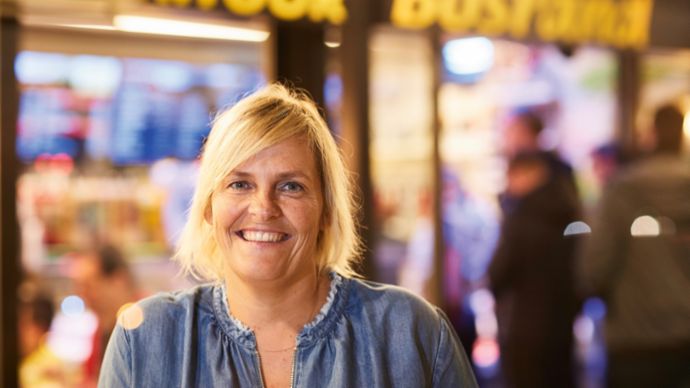

Frituur Bosrand
Cindy Sanctorum uses oil for deep-frying instead of fat. The reward: the honor of being Belgium’s finest frituur.
“Our secret: we fry in 100-percent vegetable oil.” Cindy Sanctorum
Bosrand: the fry stand can be found on the outer edges of Bruges, far from the picturesque canals and the old town’s World Heritage-listed attractions. The early evening is rush hour in the small parking lot outside the shop. The owner, Cindy Sanctorum, opened her business a quarter of a century ago, when she’d only just turned eighteen. “I didn’t want to go to college like my friends; I wanted to start up something of my own.” Her stand has been growing in popularity ever since, and she now employs a staff of fifteen. “One of the secrets of our success is that we’re open seven days a week. And that we cook the fries in 100-percent vegetable oil—just like my grandmother did. I don’t like animal fat,” says Sanctorum, whose business attracts many vegetarians. The reward for going it alone: Bosrand was recently voted Belgium’s best frituur. For the owner, this was a real accolade. And then Gert de Mangeleer, Belgium’s other three-star chef, named her shop his favorite place for fries. After all, it wouldn’t be at all typically Belgian if Peter Goossens were the nation’s only top chef with a secret passion for frites.

Peter Goossens’s secret recipe for the perfect pommes frites to serve with WagyU beef:
- Use Alegria or Bintje potatoes.
- Peel the potatoes and cut them into pieces around seven millimeters thick and eight centimeters long. Then give them a quick rinse under cold water and lay them out to dry on paper towels. This is important to ensure the fries don’t stick together after being deep-fried.
- Immerse the potato slices in hot, pure beef fat at 160 degrees Celsius for a few minutes. They should only develop a little bit of color. Then lay them out on paper to cool down.
- Then deep-fry for two to three minutes in peanut oil heated to 180 to 190 degrees Celsius until the fries are yellow and crispy. You can also add a few slices of garlic to the oil for even more flavor.


